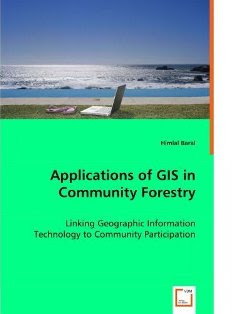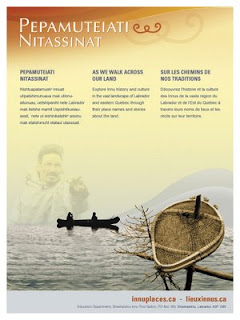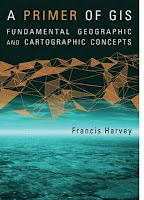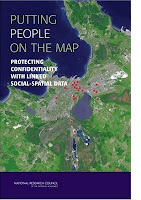
Friday, September 18, 2009
Applications of GIS in Community Forestry: Linking Geographic Information Technology to Community Participation

Monday, May 04, 2009
Participatory 3D Modelling in Bale, Ethiopia
The exercise has been done to assist local communities in planning out a more sustainable management of the area, reviving local bio-cultural diversity and supporting local environmental education.
More information on the exercise is found here.
Monday, December 22, 2008
PGIS/PPGIS Global Forum - Year's end summary and greetings
The PGIS/PPGIS Global Forum [ppgis] has steadily grown, reaching a total of 1346 members as of today. Approximately 560 messages have been posted this year. The Spanish [ppgis-sp] chapter launched in 2007 has grown to a total of 113 members, while the French [ppgis-fr] and Portuguese [ppgis-pt]-speaking communities have been languishing (sorry!). Each chapter operates independently and is managed by groups of 4-6 moderators. All chapters can be reached and joined via the PGIS/PPGIS gateway http://www.ppgis.net/
On the PGIS/PPGIS Global forum [ppgis] postings and debates have been rich in terms of content and innovation. Year 2008 started with a debate on PGIS / PPGIS practice for conflict management. Amidst announcements and postings for sharing information or seeking advice, debates focused the use of PGIS practice in the development sector, understanding of PGIS vs. PPGIS, partnerships and success in PGIS, PPGIS and Vulnerability, PGIS/PPGIS indicators, fundraising for PGIS projects, P-mapping certification, PGIS for disaster response, measuring the appropriateness of PGIS, free and open source desktop GIS, land tenure before and after disasters, confidentiality of data, climate change & Google Earth, mapping with Mobile Indigenous Peoples, using P3DM, community-based mapping courses, participative methods for SDI construction, PPGIS as a participatory health promotion strategy, and CyberTracker, amongst others.
In 2008, CTA initiated a project entitled “Support the spread of good practice in generating, managing, analysing and communication spatial information”. The project is financially supported by CTA, the International Fund for Agricultural Development (IFAD), IKM Emergent and the Ford Foundation Brazil. The project The project’s overall objective is to increase the capacity of indigenous and other marginalised peoples to engage in effective policy dialogue and advocacy. The output of the initiative will consist in a freely available Multilingual, Modular, Multimedia Training Kit to be used in face to face capacity building events. The kit will be published in English and Spanish. Brazilian-Portuguese and French versions will follow. In the context of this project, CTA will soon launch a Photo Competition. More information on the project and the competition will soon be published on http://pgis.cta.int/
Here are a some other initiatives where members of this list are invited to participate and contribute:
- PPGIS/PGIS Group on LinkedIn (LinkedIn is a social- networking site used by professionals);
- http://www.ppgis.eu/ : a highly specialized Custom Search Engine reflecting knowledge and interests in PGIS/PPGIS practice and science;
- P3DM Where? is an interactive world map based on Google Map technology operated collaboratively by participatory mapping practitioners and serves for locating "participatory 3D Modelling (P3DM) exercises" worldwide;
- A Participatory Translation Initiative has been launched among members of this list last October for translating the subtitles of a video on P3DM. So far translations have been completed by volunteers for the following languages: Arabic, Fijian, Italian, Swahili and Turkish. Other 18 languages are currently being translated. The video with subtitles can be embedded on any blog of website using a code which can be obtained on the video page under the heading “share”;
- “Palawan Endangered” this recently launched initiative consists in a campaign aimed at raising awareness on the in the ongoing and planned mining activities in Palawan (and the whole of the Philippines). The campaign will make use of web 2.0 tools including Google Earth, Google Docs and Video Sharing sites and seeks volunteer contributions. Interested parties should contact palawan.endangered[at]gmail.com;
- On PPgis.Net there is a regularly updated collection of books dealing with PGIS/PPGIS practice. If you would like to recommend additional titles you should write to ppgis[at]ppgis.net
- The PGIS/PPGIS Web Ring is a “ring of websites” sharing common interests in collaborative geospatial information management practice aimed at supporting conservation and development, sustainable natural resource management, customary property rights and peer-to-peer communication. If you run a site dealing with PGIS/PPGIS practice and are interested in joining the ring, please follow this link (for webmasters).
Please note that DGroups, the platform hosting this list, is in the process of being transferred to a more up-to-date environment (Dgroups 2.0). This may cause some temporary disruption in the service. At present all postings are found here . (This may change when this list will be migrated on the new platform).
Selected collections of annotated links are found on http://www.ppgis.net/ You can use all features of this community platform after login (join) by entering your e-mail address and password. In case you forgot your password, you can retrieve it via this link.
The [ppgis] forum and related web site http://www.ppgis.net/ are run and moderated on a voluntary basis with no external financial support. Many thanks to all contributors and moderators. Thanks again for all contributions, messages behind the scene, encouragements and suggestions for improvement. Best regards and best wishes to all of you for a successful and exciting year 2009.
Giacomo Rambaldi
Moderator and List Administrator
http://www.ppgis.net/
http://www.iapad.org/
http://participatorygis.blogspot.com/
Sunday, November 23, 2008
Innu Place Names Website
 Lots of place names in Labrador come from the Innu (e.g. Minipi-Lake from Minai-nipi,
Lots of place names in Labrador come from the Innu (e.g. Minipi-Lake from Minai-nipi,meaning ‘burbot lake’), but others were given by pilots, mining companies, settlers and outfitters and were imposed on places that already had Innu names. The website will enable the Innu and members of the general public to start using the Innu place names, to learn about the meaning of the names and how to pronounce them.
Other Aboriginal groups have been doing place name research over the years, and some are in the process of publishing their own websites (e.g. James Bay Cree and Norwegian Sámi). However, Pepamuteiati nitassinat is the first, comprehensive one put on line to date.
Grand Chief Nui pointed out that “Over thirty years of research with our Elders went in to this website. It’s a gift from our Elders to younger Innu people. It’s part of our Elders’ legacy. It’s also an important part of our intangible cultural heritage that will help educate people about the richness of our history and traditions.”
The website was made possible by contributions from many institutions and agencies including multimedia company Idéeclic, Environment Canada, Parks Canada, Memorial University Linguistics, and Canadian Boreal Trust. The Innu Nation wishes to acknowledge the generous financial support of the Department of Canadian Heritage through Canadian Culture Online.
History of the website project
- The Innu place names available on the website were collected in the context of a number of research projects going back to the mid-1970s.
- The biggest source of place names for the site is a 1980 mapping project. Over 500 maps at 1:50,000 scale were cut and taped together to form two giant maps. One was laid on the gym floor at Peenamin McKenzie School in Sheshatshiu and the other in the parish hall in the former community of Davis Inlet. Older hunters were invited to walk about on these maps to point out the locations of place names as well as old travel routes, camp sites, caches, birth places and good hunting and fishing places.
- Only seven of the 34 older hunters who worked on the 1980 mapping project are still living.
- A great deal of validation work was undertaken with respect to the places names which was done by ethnolinguist, José Mailhot, and anthropologist Peter Armitage, with the collaboration of Marguerite MacKenzie, Sebastien Piwas, George Gregoire, Jean-Pierre Ashini, Basile Penashue, Tony Penashue, and several Innu Elders.
- Project managers for the website project were Kanani Penashue and Peter Armitage.
What’s on the website
- The site features a searchable database of over 500 Innu place names.
- Each place name record in the database contains information about the meaning of the name, how to pronounce it, and its location. Site users can click on an audio icon to hear the pronunciation of each place name.
- The site has an interactive map showing the locations of the place names.
- Background information on how Innu place names are constructed is presented.
- Video clips and photographs show people what the named places look like or document land use activities there.
- Audio narratives from Innu Elders and youth tell stories about events and people associated with certain place names.
- Future phases of the website will add more place names, video clips, photos, and audio stories.
Source: Press relase by Natuashish (Labrador), 21.11.08
Saturday, September 20, 2008
Management Change at UNOSAT
In parallel, UNDP has decided to mainstream satellite applications throughout its network of 166 country offices supported by its 40 regional technical centers to help face the main development challenges. A new trend is emerging within the “territorial approach to development”, where a more local and decentralized way of supporting development efforts in most vulnerable countries is being applied. Although all dimensions of the UNDP development agenda will benefit from mainstreamed satellite applications, environment and energy is the area that has been selected as key entry point, considering the urgent need to help local communities to face climate change challenges with the most appropriate tools including satellite and GIS applications.
Tuesday, August 26, 2008
African Indigenous Peoples’ Workshop on effective use of ICTs in environmental advocacy
Tuesday, August 12, 2008
Rebecca Moore from Google Earth Outreach, Geneva layer showcase
Wednesday, August 06, 2008
PPGIS.net on LinkedIn to foster community development among pgis/ppgis practitioners
Since DGroups, the platform hosting [ppgis] offers limited opportunities for members to learn about each other and to e.g. get together on a country basis. Considering this limitations and the opportunities offered by emerging web 2.0 applications, I have created a parallel peer2peer space on LinkedIn. LinkedIn is a social- networking site used by professionals.
Joining this new space will allow you to easily identify and establish contact with other [ppgis] members.
The goal of this new space is to help [ppgis] members:
To easily identify members of the [ppgis] network, learn more about them and eventually establish personal contact;
Accelerate careers/business through referrals from [ppgis] Group members;Put a face and a professional curriculum behind a name or an e-mail address
Below is a short vide explaining how LinkedIn works:
Tuesday, April 15, 2008
A Primer of GIS: Fundamental Geographic and Cartographic Concepts By Francis Harvey

Aboriginal Communities in Google Earth
Monday, April 07, 2008
Journey of our Life
A 14-minute participatory video production by PAFID - Mindanao documenting a journey to the land of the ancestors of Higaonon Indigenous Peoples living in Portulin, Bukidnon, Philippines. The virtual journey recreates experiences lived up by the members of the community in using a physical participatory 3D model (P3DM) to document, share across generations and safeguard their intangible cultural heritage.
Geo-visualisation for participatory spatial planning in Europe
 The principle of public participation in policy-making and policy implementation features in many European Union directives and policy documents. It is also undeniably connected to the rise of what can be called the European e-society, in which digital technologies are expected to strengthen public involvement in democratic processes. One broad group of such technologies are commonly referred to as geo-visualisations.This book contains the results of a European project that explored the potential for using innovative geo-visualisation techniques in public participation processes for spatial planning. The approach taken in the project involved continual interaction between concept development, the technological possibilities, and their practical application in case studies conducted in Belgium, Poland, Portugal, Spain and the Netherlands. The structure of the book mirrors this procedure. Three chapters discuss the general concepts of spatial planning and participation, e-interaction, and innovation in organisations. Two chapters present the results of research into the communicative potential and the usability of 3-dimensional geo-visualisations. The translation of these concepts and findings into practice is reported in five chapters devoted to the case studies.The project generated greater understanding of the ways in which geo-visualisation can help to improve public participation in the process of finding solutions to spatial planning issues. This book and accompanying DVD with extra information, is therefore a valuable resource for professionals and practitioners already working with geo-visualisations in participatory spatial planning as well as those looking to do so. They can turn to this book for insights and inspiration.
The principle of public participation in policy-making and policy implementation features in many European Union directives and policy documents. It is also undeniably connected to the rise of what can be called the European e-society, in which digital technologies are expected to strengthen public involvement in democratic processes. One broad group of such technologies are commonly referred to as geo-visualisations.This book contains the results of a European project that explored the potential for using innovative geo-visualisation techniques in public participation processes for spatial planning. The approach taken in the project involved continual interaction between concept development, the technological possibilities, and their practical application in case studies conducted in Belgium, Poland, Portugal, Spain and the Netherlands. The structure of the book mirrors this procedure. Three chapters discuss the general concepts of spatial planning and participation, e-interaction, and innovation in organisations. Two chapters present the results of research into the communicative potential and the usability of 3-dimensional geo-visualisations. The translation of these concepts and findings into practice is reported in five chapters devoted to the case studies.The project generated greater understanding of the ways in which geo-visualisation can help to improve public participation in the process of finding solutions to spatial planning issues. This book and accompanying DVD with extra information, is therefore a valuable resource for professionals and practitioners already working with geo-visualisations in participatory spatial planning as well as those looking to do so. They can turn to this book for insights and inspiration.
Friday, April 04, 2008
2008 Indigenous Planning Conference "Leading Change: Blending Indigenous and Western Planning Tools" (1-3 October 2008, Anchorage, Alaska, USA)
The Leading Change conference (1-3 October 2008, Anchorage, Alaska, USA) is sponsored by the American Planning Association’s (APA) Alaska and Hawaii Chapters and the Indigenous Planning Division. The three-day conference will bring together planners, tribal leaders, and community members to share local experiences, planning tools and practices that reflect a commitment to honoring history, cultural identity, tradition, and land tenure. Conference participants will share stories from their own communities organized around general topic areas including land use and natural environment; governance, nation building and leadership; local control, community sustainability, and resilience; culture, education, and community services; economy; and infrastructure, public services, and facilities.
Putting People on the Map: Protecting Confidentiality with Linked Social-Spatial Data

At the same time, precise spatial data make it more likely that individuals can be identified, breaching the promise of confidentiality made when the data were collected.
Because norms of science and government agencies favor open access to all scientific data, the tension between the benefits of open access and the risks associated with potential breach of confidentiality pose significant challenges to researchers, research sponsors, scientific institutions, and data archivists. Putting People on the Map finds that several technical approaches for making data available while limiting risk have potential, but none is adequate on its own or in combination. This book offers recommendations for education, training, research, and practice to researchers, professional societies, federal agencies, institutional review boards, and data stewards.
